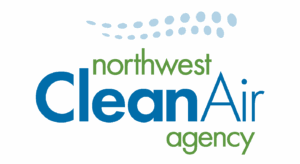Air quality indoors is often worse than it is outdoors. Although mold is the most common indoor air quality problem, carbon monoxide and chemicals from products used indoors and off-gassing building products are also sources of problems.
Inadequate ventilation with fresh outside air compounds indoor air problems. It leads to moisture accumulation, mold growth and elevated concentrations of airborne contaminants that cause or worsen asthma symptoms. A good dehumidifier can also be beneficial in many situations.
Northwest Clean Air Agency does not provide indoor air testing of any kind, only informational materials and referrals. If you are having a landlord / tenant issue, please see the Washington State Landlord / Tenant Act.
We’ve compiled information and tips into this online resource to help you keep your indoor air clean and healthy below.
Please read over these Indoor Air FAQs for more information.
In addition, for information about lead-based paint, see this webpage provided by the Washington State Department of Commerce.
Brochures
Mold guidance for tenants and landlords (not for hot, humid regions)
Videos
Attack Asthma at Home: A Practical Approach to Asthma Trigger Control and Prevention
Mold in your home
Fresh air for a healthy home: A consumer’s guide to ventilation systems
Houses need to breathe — in a deliberate and controlled fashion. Fresh air delivered throughout a home is essential to maintaining a healthy indoor environment. Learn the essentials of ventilation in this six-segment video:
- Why ventilate?
- Exhaust only systems
- Integrated systems
- HRV/ERV systems
- Installation and inspection


